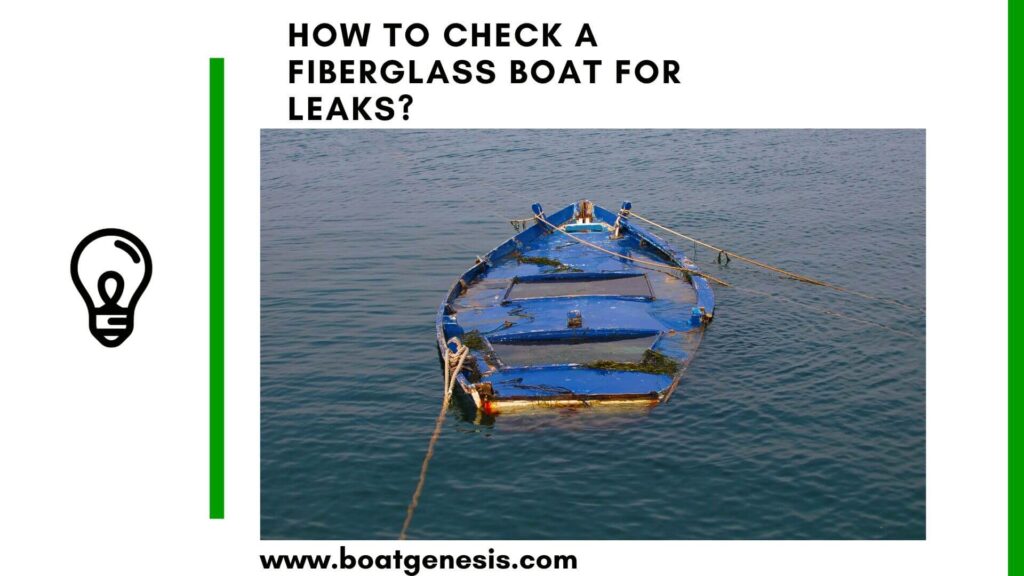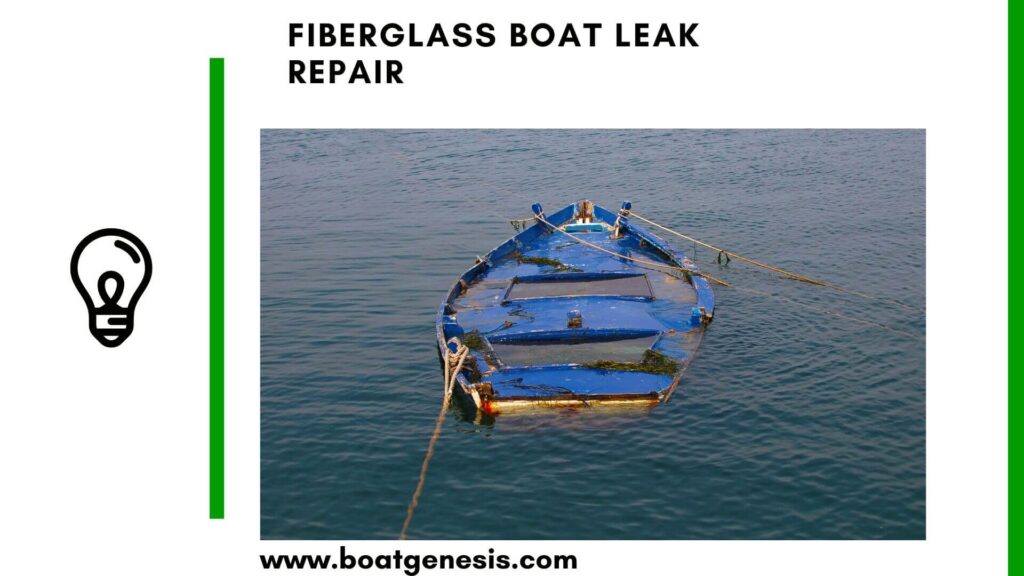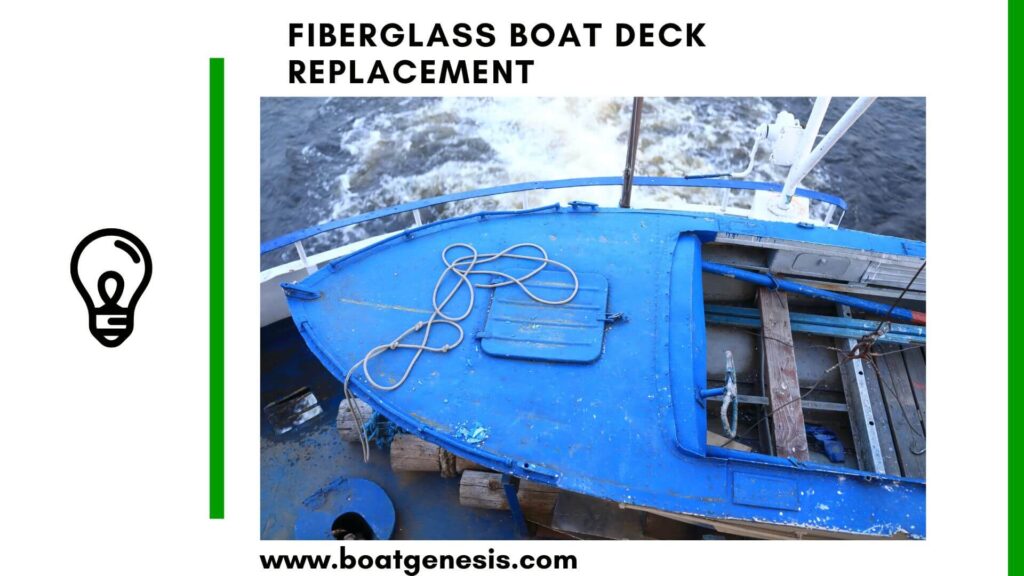Epoxy resins are essential for repairing damaged fiberglass on boats, cars, and other surfaces. They create strong, waterproof bonds that restore structural integrity and appearance. When applied correctly, high-quality epoxy can make fiberglass repairs nearly invisible while providing long-lasting durability.
We find that the best epoxy resins for fiberglass repair combine several important qualities: strong adhesion, water resistance, and ease of application.
We’ve tested numerous products to find options that provide reliable performance for both beginners and experienced users.
Best Epoxy Resins for Fiberglass Repair
We’ve researched and tested numerous epoxy resins to find the most effective options for fiberglass repair projects. Our list includes products that offer strong adhesion, durability against water damage, and ease of application for both beginners and experienced users.
1. J-B Weld Fiberglass Resin

This two-component resin system offers reliable and waterproof repairs for fiberglass surfaces at a reasonable price point.
Pros
- Versatile applications from boats to shower repairs
- Quick 2-hour drying time
- Works with fiberglass cloth for reinforced strength
Cons
- Requires proper mixing and application technique
- Strong odor during application and curing
J-B Weld’s Fiberglass Resin provides a dependable solution for fixing holes, cracks, and other damage in various surfaces. The quart-sized container gives you plenty of material for multiple repairs. When paired with fiberglass cloth or mat, it creates strong, durable fixes that stand up to water exposure.
We found that the 2-hour drying time strikes a good balance between giving you enough working time and not making you wait too long for the repair to set. This makes it ideal for weekend DIY projects when you don’t want to wait days for completion.
The product comes from a trusted brand known for quality adhesives. While it costs more than some alternatives, the reliability and durability of the repairs justify the price for most users.
The USA-made formula works particularly well for marine applications where waterproof sealing is essential, but it’s equally effective for bathroom fixtures and other household repairs where moisture resistance matters.
2. TotalBoat 5:1 Marine Epoxy
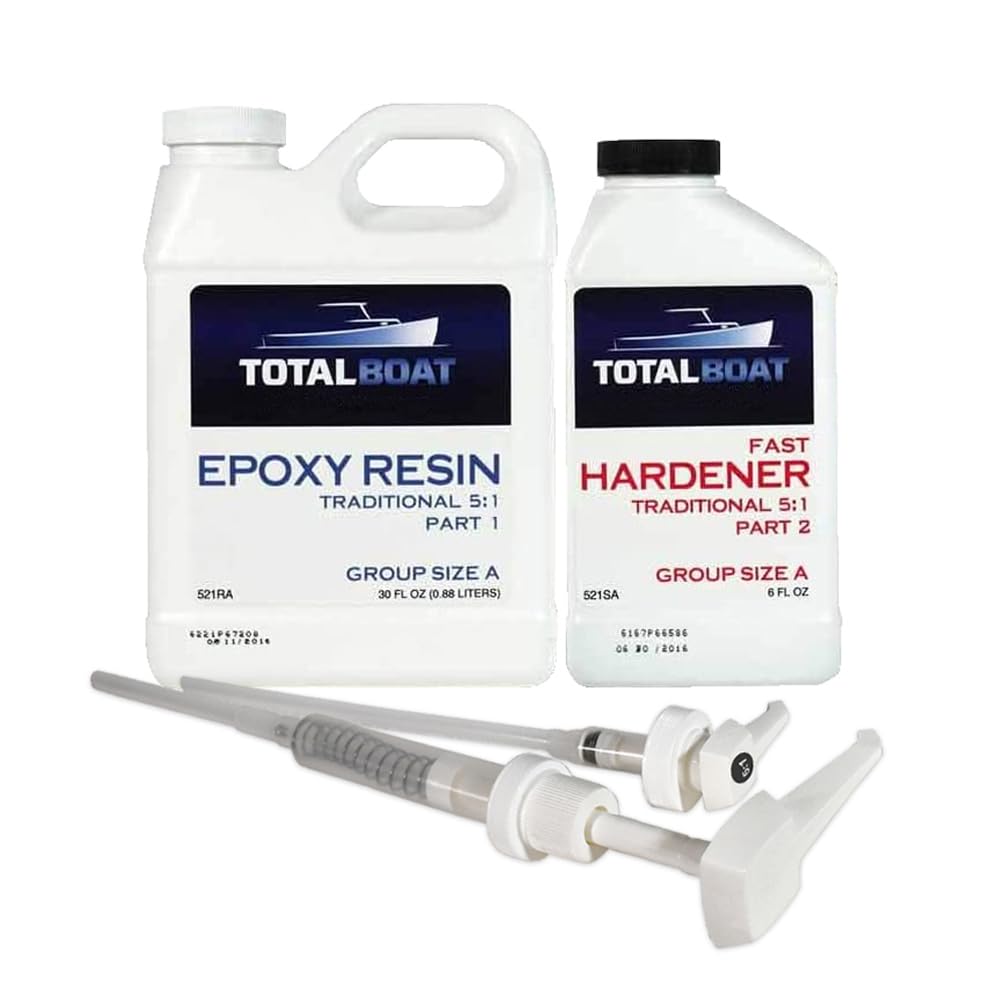
TotalBoat’s marine-grade epoxy system offers exceptional strength and versatility for fiberglass repairs, making it our top recommendation for serious repair projects.
Pros
- High-strength formula bonds to multiple materials
- Complete kit includes color-coded pumps for easy mixing
- Compatible with fillers for customized repair solutions
Cons
- Not intended for clear coating applications
- Plastic bottle can feel flimsy when using the pump
- Requires careful temperature monitoring for optimal curing
This marine-grade epoxy stands out for fiberglass repair because of its impressive tensile strength and durability in harsh conditions.
The 5:1 ratio system comes as a complete kit with resin, hardener, and calibrated pumps that take the guesswork out of mixing. We appreciate that you can choose between Fast or Slow hardener depending on your working conditions and project timeline.
What makes this epoxy particularly versatile is its low viscosity and self-leveling properties. These characteristics help it penetrate and wet out fiberglass effectively.
The formula works well for boat repairs, RV delamination fixes, and various composite projects. You can even blend it with fillers like microballoons or silica to create specialized compounds for different repair needs.
The cured product resists water, salt, chemicals, and physical damage, making it ideal for long-lasting repairs. It bonds strongly to wood, metal, fiberglass, and carbon fiber, creating structural fixes that can be sanded and painted later.
While it’s not the cheapest option available, the quality and reliability of this American-made epoxy make it worth considering for your serious fiberglass repair projects.
3. TotalBoat High Performance Epoxy Kit

We recommend this versatile epoxy resin for fiberglass repairs because of its user-friendly pumps, non-blushing formula, and multiple hardener options that adapt to different project needs.
Pros
- Simple 2:1 ratio with included calibrated pumps
- No sanding between coats due to non-blushing formula
- Multiple hardener speed options (slow, medium, fast)
Cons
- Limited working time in warm temperatures
- Requires careful measurement for proper curing
This crystal clear marine-grade epoxy system stands out for fiberglass repairs. The kit includes a low-viscosity resin and non-blushing hardener that eliminates the need for washdowns between coats. This saves significant time when working on boat repairs or other fiberglass projects.
The metered pump system takes the guesswork out of mixing. One full pump of resin to one full pump of hardener creates the perfect 2:1 ratio every time. Even beginners can achieve professional results without complicated measuring tools or scales.
We appreciate the flexibility of choosing between slow, medium, and fast hardener options. This lets you control working time based on your project needs and environmental conditions. For large fiberglass repairs, the slow hardener gives more time to work, while the fast option helps with small, quick fixes when time is limited.
TotalBoat’s formula works well for clear coating applications and bonds to a wide range of materials beyond fiberglass, including wood and various metals. The low odor and low VOC formulation makes it suitable for indoor use, and the BPA-free cured surface adds another level of safety.
4. 3M Bondo Fiberglass Resin

This versatile fiberglass resin offers exceptional bonding strength and waterproof protection for a wide range of repair projects.
Pros
- Works on multiple surfaces including wood, fiberglass, metal, and concrete
- Includes liquid hardener for precise mixing
- Compatible with virtually all paint systems
Cons
- Requires careful handling and gloves
- Strong odor during application
- Limited quantity in the 0.9 pint container
The 3M Bondo Fiberglass Resin delivers professional-quality results for both small and large repair jobs. We found this product particularly valuable for its versatility across different applications. Whether you’re fixing a damaged bathtub, repairing a boat hull, or sealing rotted wood, this resin provides the strength and durability needed for lasting results.
What sets this product apart is its waterproof formula that creates a solid, reliable bond. The inclusion of Bondoc Fiberglass Resin Liquid Hardener ensures convenient mixing and proper curing.
The 0.9 pint size makes this product a good choice for smaller projects or occasional repairs. With a strong 4.6-star rating from customers, it’s clear that this resin delivers on its promises.
5. 3M Bondo Fiberglass Repair Kit

This all-in-one DIY fiberglass repair kit offers excellent value for quick and waterproof repairs on multiple surfaces.
Pros
- Complete kit with all necessary materials and tools
- Creates 100% waterproof, durable repairs
- Works on various surfaces including fiberglass, metal, wood, and concrete
Cons
- Limited amount of material for larger projects
- Requires precise measuring for proper hardening
- May need practice to achieve smooth, professional-looking results
The 3M Bondo Fiberglass Repair Kit provides an affordable solution for fixing holes, cracks, and damaged areas on boats, cars, and other items without replacing entire parts.
It includes everything needed for a successful repair—fiberglass resin, liquid hardener, cloth, mixing tray, stick, and plastic spreader. This comprehensive package eliminates the need to purchase additional supplies for basic repairs.
One of the standout features is the versatility of this product. The strong formula bonds effectively to multiple surfaces, making it useful for repairs beyond just fiberglass.
The resin creates a permanent seal that’s completely waterproof, ensuring long-lasting durability even in wet conditions.
Time efficiency is another advantage of this repair system. The resin hardens in under two hours and becomes sandable, allowing for faster project completion.
With a 4.5-star rating from over 3,500 customers, many users confirm the product performs as advertised. However, achieving professional results still requires careful measurement (10 drops of hardener per ounce of resin) and some basic skills.
For small to medium repairs, this kit delivers excellent value, though larger projects may require additional materials.
6. Brampton Marine Epoxy
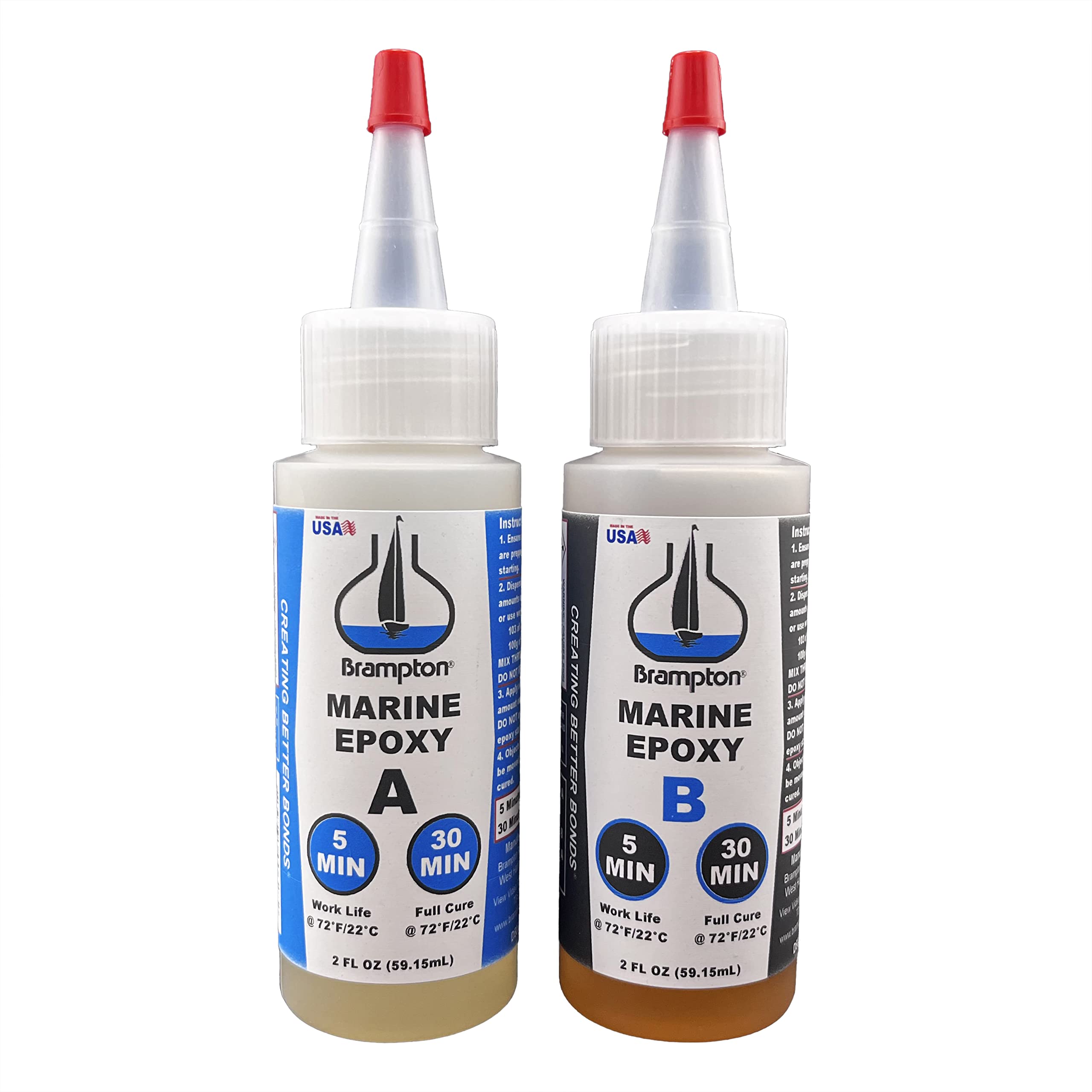
This quick-curing marine epoxy offers exceptional bonding power for fiberglass repairs, even in underwater applications.
Pros
- Works underwater in both fresh and saltwater
- Quick 30-minute cure time
- Compatible with multiple materials including fiberglass and metals
Cons
- Somewhat thick consistency makes it challenging for certain applications
- Only comes in a 4-ounce size
- May be difficult to work with for beginners
We found the Brampton Marine Epoxy to be a standout choice for emergency boat repairs. The unique underwater application capability sets it apart from typical epoxies on the market. This feature proves invaluable when you need to make quick repairs without removing your boat from the water.
The simple 1:1 mixing ratio makes this product user-friendly. Just combine equal parts of components A and B, and you’re ready to go. What impressed us most was the quick 30-minute cure time, which is significantly faster than competitors that often require 2 hours or more to set properly.
This epoxy bonds exceptionally well to fiberglass, PVC, metals, and even graphite. We appreciate its versatility for various repair jobs, from fixing hull blisters to deck repairs.
The finished product can be sanded and painted, allowing for a clean, professional-looking finish. For those keeping emergency repair supplies on board, this marine epoxy deserves a spot in your kit.
Buying Guide
When choosing an epoxy resin for fiberglass repair, several factors should guide your decision. We’ve compiled the key considerations to help you make an informed choice.
Cure Time
Different epoxy resins have varied cure times. Fast-curing options set within 5-30 minutes, while slow-curing types may take 24 hours or more. Choose based on your project’s urgency and complexity.
Viscosity
Viscosity determines how easily the epoxy flows. Low-viscosity resins spread easily but might run on vertical surfaces. High-viscosity options are better for filling gaps and vertical applications.
| Viscosity Type | Best For |
|---|---|
| Low (thin) | Laminating, coating, penetrating damaged areas |
| Medium | General repairs, bonding |
| High (thick) | Gap filling, vertical surfaces |
UV Stability
For outdoor repairs, UV resistance is crucial. Non-UV resistant epoxies can yellow and degrade when exposed to sunlight. Always check the UV rating if your repair will face sun exposure.
Working Temperature
Consider the temperature range your repair must withstand. Marine applications often require different temperature resistance than automotive or home repairs.
Water Resistance
For boat repairs or outdoor applications, water resistance is essential. Some epoxies offer better waterproofing than others.
Kit Contents
Many epoxy resins come with accessories like measuring cups, mixing sticks, and gloves. These additions can save you time and ensure proper application.
Remember to check the epoxy-to-hardener ratio before purchase. Some kits require precise measurements, while others come in convenient pre-measured packages.
How to Choose the Right Epoxy for Your Fiberglass Repair
Consider the Size and Type of Repair
The scope of your repair should guide your product choice. Small cosmetic fixes work well with quick-setting formulas in smaller quantities. Structural repairs benefit from slower-curing options that allow thorough saturation of fiberglass cloth.
Surface repairs need different properties than underwater or below-waterline fixes. Some epoxies are specifically formulated for underwater applications, while others perform better above water. We recommend choosing a marine-grade epoxy for any repair that will be exposed to water, even occasionally.
Working Time vs. Cure Time
Working time (also called “pot life”) refers to how long the mixed epoxy remains workable before starting to harden. Cure time indicates when the epoxy reaches full strength. These factors matter based on your environment and schedule.
In warm conditions, epoxy cures faster, reducing working time. If you’re working in high temperatures (above 80°F), choose a slow-hardening formula. For cold environments (below 60°F), some epoxies won’t cure properly without additional heat or special hardeners designed for low temperatures.
Application Method
Consider how you’ll apply the epoxy. Some repairs require brushing liquid epoxy onto surfaces, while others need thickened compounds for filling gaps.
This article was all about the best epoxy resins for fiberglass repair. Hope you have gained value from it.

Founder of BoatGenesis, Warren has hands-on experience in fiberglass boat repairs, marine equipment testing, and powerboat building. Learn more about Warren.


